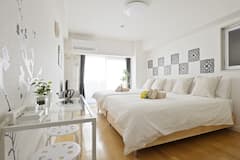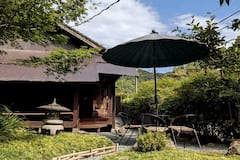New Year is the most important holiday in Japan, with most businesses closed from 1 to 3 January. In fact, to the Japanese, New Year is like what Christmas is to the Western part of the world. This is the time when families have a big reunion and spend time with their loved ones, especially if they are all working in different parts of the country and only return to their hometowns during this long holiday season.
You may be thinking to yourself, as most shops and tourist attractions would be closed during the New Year holidays, you should avoid travelling to Japan. However, that’s definitely not true! There are several ways you can immerse yourself in the intense Japanese New Year’s holiday spirits, even if you do not have any Japanese family or friends to spend time with. Of course, feel free to ring in the new year at the most beautiful villages or the best glamping spots in Japan. This article will show you more specific ways to enjoy Japan during the New Year holiday season!
1. Watch the first sunrise of the year at Tokyo Skytree

Skyscrapers are excellent vantage points to welcome the arrival of the New Year and witness the spectacular skylines be highlighted by colorful explosions, but do you know what else a skyscraper is good for? Sunrise! After an eventful New Year’s Eve, head up to Tokyo Skytree to wait for the year’s first sunrise. Reel in the quiet (or not-so-quiet) morning and manifest a prosperous New Year for yourself. Such nice views always give us a hopeful feeling for what’s to come.
Tokyo Skytree
Address: 1 Chome-1-2 Oshiage, Sumida City, Tokyo 131-8634, Japan
Website: Tokyo Skytree
2. Join the countdown parties in Roppongi

As one of the liveliest entertainment districts in Tokyo, Roppongi leaves no one behind. Make your New Year’s Eve this year the wildest yet by joining a countdown party in the neighborhood. Where in Roppongi, you might ask? Well, literally almost everywhere! Establishments at the district meet their busiest day on New Year’s Eve, so you’ll have no trouble blending in. Go for drinks at a bar, mingle with locals and foreigners alike, and yell your lungs to oblivion come midnight!
Roppongi
Address: Minato, Tokyo, Japan
3. Watch New Year's Eve TV specials

Of course, not all of us have the ability to go out late at night and party ourselves into exhaustion only to wake up tired. That sure isn’t a good way to welcome the new year. Japan broadcasts plenty of its New Year’s Eve TV specials, and it’s just a good a celebration as any! Pop open the champagne, bring out the snacks, and cozy up under the blanket with your loved one. You can even make it an intimate activity with your friends! Set up your own New Year’s Eve party at home and join the quirkiest countdowns from your TV!
You might be interested in these Airbnbs!
4. Tuck into the New Year’s Eve traditional noodle dish

On New Year’s Eve, the Japanese will eat a traditional noodle dish known as Toshikoshi Soba, which literally means “year-crossing buckwheat noodle”. Eating this bowl of long and thin buckwheat noodles symbolises the crossing from one year to the next. As the noodles can be easily cut, they represent letting go of the regrets of the past year. In addition, the long noodles signify longevity, and buckwheat symbolises stamina and wealth. Thus eating Toshikoshi Soba has a meaning of hoping to live a long and healthy life. Since you are in Japan during this festive period, why not follow the locals by eating this traditional dish as your last meal of the year?
5. Hatsumode - the first shrine visit in the new year

Hatsumode (初詣) refers to the first Shinto shrine visit of the Japanese New Year, although some visit a Buddhist temple instead. It does not matter that you are not a religious person. In fact there are many Japanese who do not usually visit shrines or temples for religious reasons, but they still follow this new year tradition to start the year on a positive note. Experience a festive mood all around with food stalls and many people lining up at the main hall to pray for health, happiness and good fortune in the year to come. Furthermore, you can also purchase omikuji, a random fortune written on a small piece of paper to bless you for the new year. Free sweet sake is also given out to visitors at shrines and temples on this special day. It is certainly a great gesture that helps to warm you up in the chilly weather!
Some of the popular Hatsumode sites include Tokyo’s Meiji Shrine, Kyoto’s Fushimi Inari Taisha and Kamakura’s Tsuruoka Hachimangu. Be prepared to wait in line for over an hour before you reach the hall for a prayer. You will also be delighted to know that major urban train lines and lines serving popular shrines and temples run through the night from December 31 to January 1. So there’s no reason why you should miss out on this annual Japanese tradition!
6. Ring the bells on New Year’s Eve for a fresh start to the new year

Follow the Japanese Buddhist tradition of welcoming the new year by ringing the temple bell on New Year’s Eve. Known as the Joya no Kane ceremony, which means the New Year’s Eve bells, the temple bell is rung 107 times on New Year’s Eve late night, and once more just at midnight on New Year’s Day. This ceremony is practised because the Japanese Buddhist believes that an individual experiences 108 worldly desires throughout one’s life. The final ring at midnight signifies a fresh start to the new year, with last year’s problems all abandoned. You need not be a Buddhist to be able to join in this traditional ceremony. Visit one of the numerous Buddhist temples in the country, enjoy a unique New Year’s Eve in Japan, and look forward to a bountiful new year!
Read also: Where to go for the Bells on New Year’s Eve in Tokyo?
7. Buy a lucky grab bag from 1 January

From 1 January of the new year, the lucky grab bag, or fukubukuro as the locals call it, will be available for sale in most shopping malls and departmental stores. This is a Japanese New Year custom in which merchants fill grab bags with unknown random products left unsold from the past year and sell them for a substantial discount, usually 50% or more off the list price of the products contained within. Some clothing stores have been known to stuff 100,000 JPY (902 USD) worth of merchandise in some of their 10,000 JPY (90.20 USD) fukubukuro. So if you don’t mind taking a little risk for potential big savings, why not join in the fun of queuing outside your favourite store before they open for business on the first day of the new year? Who knows, you may be the lucky one to grab a really fabulous set of items from the fukubukuro!
8. Shop till you drop

The New Year’s holiday season is the best time of the year to shop in Japan. It is comparable to the Black Friday sale in America during Thanksgiving, with numerous stores marking goods down by 50% or more. Regardless of whether you are looking at clothes, shoes, accessories, toys, electronic gadgets or household products, I am sure there is something for everyone to be excited about.
For those who have the habit of keeping a planner wherever you go, take advantage of the heavily discounted planners for the new year at popular stores such as Muji and Tokyu Hands. Strategise and plan ahead on how best you and your travel buddies are going to maximise the shopping time, because popular stores will surely see queues lining outside their entrances hours before they are open!
9. Celebrate the new year with a traditional Japanese new year feast

To usher in the new year, the Japanese also prepare a traditional new year feast, known as the Osechi-ryori, to give thanks and wish for happiness and prosperity in the new year. The Osechi-ryori is characterised by a variety of colourful dishes packed together in special 3-tiered boxes called jubako and eaten with family and friends on the first day of the new year. As New Year is the time to rest in Japan, preparation of the dishes have to be completed before New Year’s Eve. Therefore, you will notice that many of the dishes are either dried or contain a lot of sugar or vinegar to preserve the food. Common dishes for this new year feast include Kuromame (black soy beans), Kazunoko (herring roe), kamaboko (Japanese fishcake) and ebi (shrimp).
10. Emperor’s new year greeting

Last but not least, you can also visit the Tokyo Imperial Palace on 2 January. On this special day, the Emperor and his family will make a special appearance to greet the public for the new year. Besides the Emperor’s birthday on 23 December, this is the only other valuable opportunity where you would be able to tour the inner grounds of this grand palace and wave to the Imperial Family making a public appearance on a glass protected balcony around 10.10am, 11am, 11.50am, 1.30pm and 2.20pm. Feel the joyful atmosphere on the palace grounds on this special occasion. You can also take a guided tour of the palace grounds or enjoy a scenic stroll at the East Gardens beside the inner palace grounds. This Japanese New Year’s greeting tradition is a momentous event that you shouldn’t miss!
Read also: A must-see when touring Tokyo! Easy and attractive visit to the Imperial Palace
Tokyo Imperial Palace
Address: 1-1 Chiyoda Ward, Tokyo
Price: free admission.
Access: 10-minute walk from Tokyo Station.
Contact: +81 3-3213-1111
Website: Tokyo Imperial Palace
Have fun in Japan during the New Year holiday season
There are many ways to enjoy your holiday in Japan especially during the most important festive season of the year. It is the best time of the year to see and experience for yourself some of the traditional customs the Japanese still practise. I am sure you will have a splendid time enjoying your holiday with the above unique ways of celebration. Quickly plan your new year trip to Japan before it’s too late!
History
Get Trip101 in your inbox
Unsubscribe in one click. See our Privacy Policy for more information on how we use your data


























Create an account to